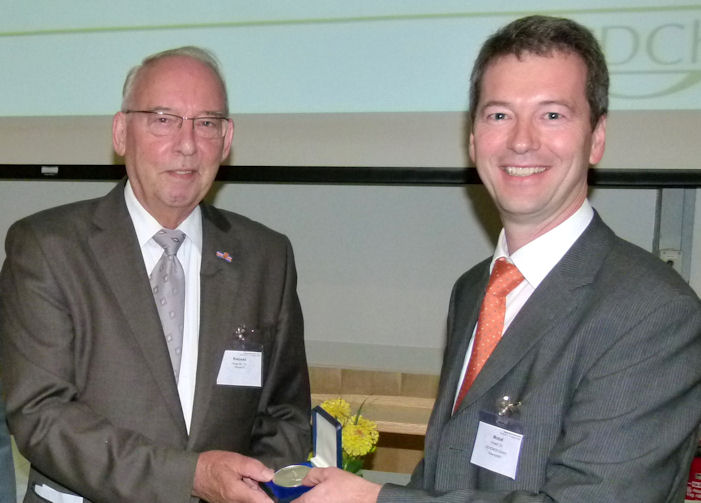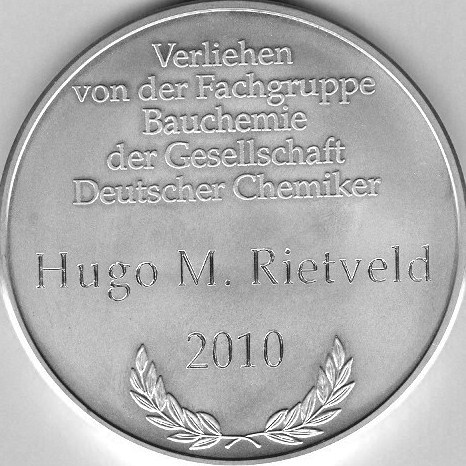THE RIETVELD METHOD
Rietveld Refinement, Rietveld Analysis, Rietveld Technique, Rietveld Calculation,
Rietveld
Quantitative Phase Analysis

Rietveld Refinement, Rietveld Analysis, Rietveld Technique, Rietveld Calculation,
Rietveld
Quantitative Phase Analysis

"Discovery consists of seeing what everybody has seen and thinking what nobody has thought."
Albert von Szent-Györgyi (Nobel prize-winner in 1937)
Materials
are essential to our technological society: semiconductors in the
electronic industry, zeolites as catalysts in the petrochemical
industry, ceramics in medicine and engineering, and, possibly in the
future, high-temperature superconductors in electrical engineering.....
In order to understand the properties of these materials and to improve
them, the atomic structure has to be known. An effective way to do this
is by means of diffraction techniques using neutrons from nuclear
reactors and particle accelerators or X-rays from X-ray tubes and
synchrotrons. The single crystal
diffraction technique, using relatively large crystals of the material,
gives a set of separate data from which the structure can be obtained.
However, most materials of technical interest cannot grow large
crystals, so one has to resort to the powder
diffraction technique using material in the form of very small
crystallites. The drawback of this conventional powder method
is that the diffraction peaks grossly overlap, thereby preventing proper
determination of the structure. The "Rietveld
Method" creates a virtual separation of these overlapping peaks,
thereby allowing an accurate determination of the structure.
The method has been so successful that nowadays the structure of
materials, in the form of powders, is routinely being determined, nearly
as accurately as the results obtained by single
crystal diffraction techniques. An even more widely used
application of the method is in determining the components of chemical
mixtures. This quantitative
phase analysis is now routinely used in industries
ranging from cement factories to the oil industry.
The success of the method can be gauged by the publication of more than
four thousand scientific papers yearly using it:

Results of a search on Google Scholar
with the
search string: ("rietveld refinement" OR "rietveld analysis"
OR "rietveld method" OR "rietveld technique" OR "rietveld
calculation" OR "rietveld quantitative phase analysis" OR
"rietveld program") for the Rietveld
Method,
the search string: (rietveld AND "quantitative phase analysis") for the Rietveld Quantitative Phase Analysis (RQPA) and
citations of the seminal
paper "A Profile Refinement Method for Nuclear and Magnetic
Structures", Rietveld,H.M.(1969), J.Appl. Cryst., 22, 65-71
from ISI Web of Knowledge.
___________________________________________________________________________________________________________

Dr. Rietveld at the neutron powder diffractometer at the High
Flux Reactor of the Energy Reseach
Foundation ECN in Petten, The Netherlands. (1987)
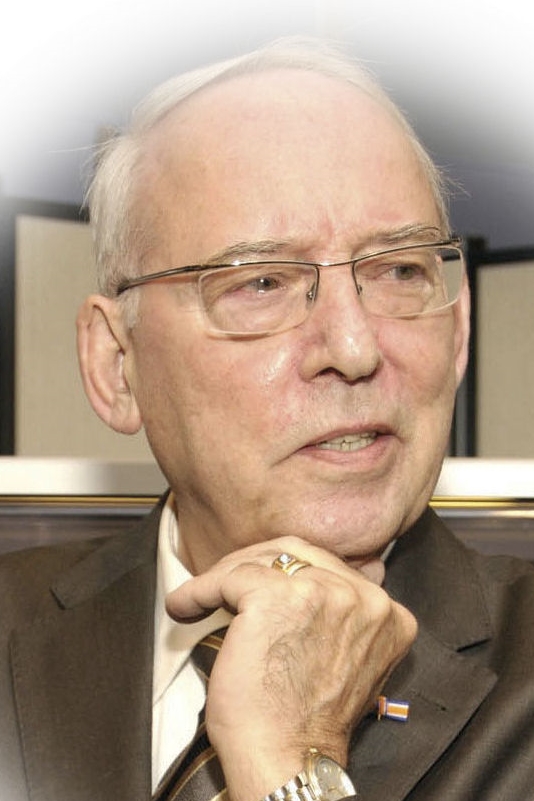 Hugo
M. Rietveld
was born in The Hague, The Netherlands, on 7 March 1932. After
completing Grammar School he went to Australia and studied physics at
the University
of Western Australia in Perth.
Hugo
M. Rietveld
was born in The Hague, The Netherlands, on 7 March 1932. After
completing Grammar School he went to Australia and studied physics at
the University
of Western Australia in Perth.
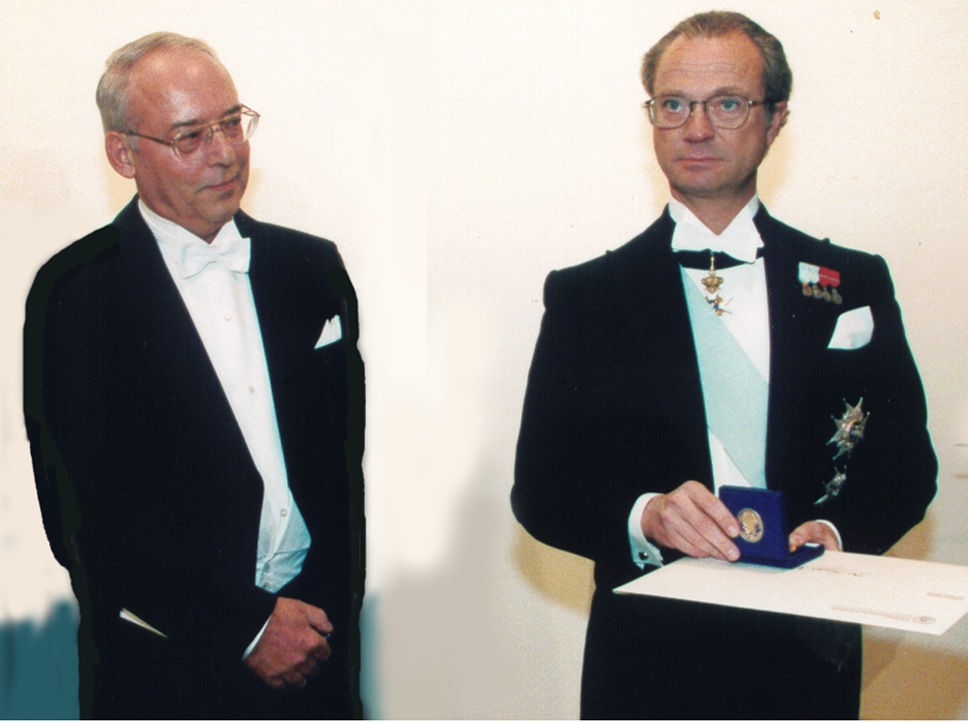

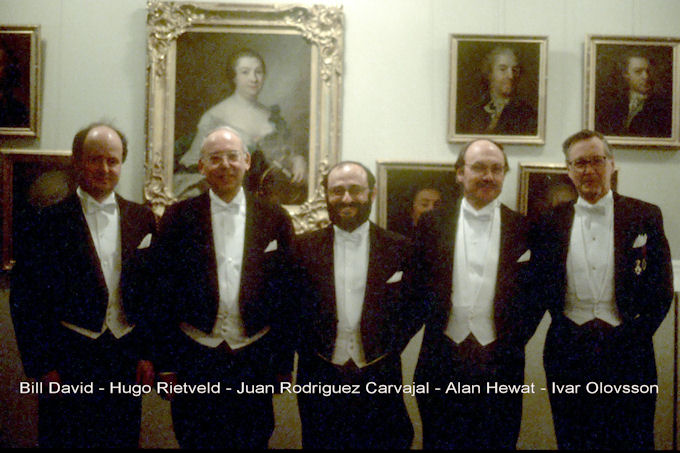
2003


Dr.
Robert L. Snyder presents Dr. Rietveld with the Barrett Award on
behalf of the Denver X-ray
Conference Organizing Committee in Denver, USA, 6 August 2003.
2004


Mrs. Marie van Rossen,
mayoress of Alkmaar, presents the decoration of the royal honour
of Officer in the Order of Oranje-Nassau to Dr. Rietveld for his
outstanding contribution
to the field of chemistry in Alkmaar, The Netherlands, 29 October
2004.
2010
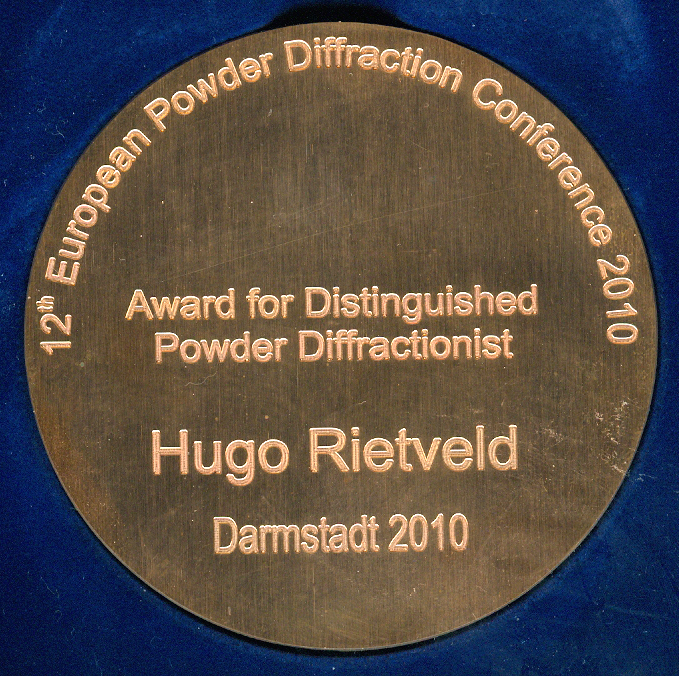
Prof. Paolo Scardi, Chairman of the International Committee of the European Powder Diffraction Conference,
presents Dr. Rietveld with the 2010 EPDIC Award for Distinguished Powder Diffractionists,
in Darmstadt, Germany, 27 August 2010.
